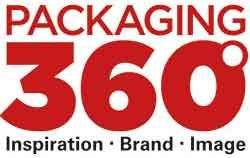“Making Packaging a Pleasure Point in the Customer Journey“
Digital services and marketplaces will increasingly shape the packaging industry. That is the conviction of Mikael Fristedt Westre, CEO and founder of Box Inc, a marketplace for cardboard boxes. Westre also advocates for more creativity in packaging design.
Online retail is just getting another strong boost from the Christmas business. What does the boom in e-commerce mean for the packaging industry?
First of all, this naturally increases demand for corrugated cardboard packaging, which makes up the majority of shipping packaging. However, the growth in online retailing and the trend toward digitalization will also have an impact beyond this. Consumers are leading the digital revolution by quickly adopting new ways of managing their everyday lives: for example, the way they interact, shop and perform administrative tasks such as paying bills. Companies are now starting to follow this trend. They have realized that their employees would prefer to do the same things at work as they do in their private lives – interact, shop, and perform administrative tasks digitally.
What does this mean for purchasing packaging?
Most packaging is still procured more or less the same way it was ten years ago. The search process for retailers to make an informed decision themselves is time consuming and costly. Is it necessary to be an expert in packaging procurement to make a good and sustainable choice? I don’t think so! Digitalization has the power to simplify the old structures by giving the buyer the necessary knowledge and a well-assorted selection online. Digital services and marketplaces can make things much easier for companies that need packaging.
But with the boom in online retailing, there is also more packaging waste. How can that be reduced?
There are two main ways manufacturers can avoid waste: by reducing the amount of packaging material used and by choosing sustainable materials. Most manufacturers try to reduce the amount of material because it is in their economic interest. Less material means lower costs. But a conscious choice must also be made when it comes to the material itself. In any case, if they choose a fibre-based solution such as a paper bag, the chances are very high that it will be recycled.
Circular economy and recycling are also major trends in the packaging industry that are likely to continue to shape 2021. However, one challenge regarding recycling is still that there are different infrastructures internationally for the separation and use of recycled materials.
What solutions do you see?
The long-term solution would be to improve the infrastructure in each case so that waste streams are cleanly separated and materials can then be effectively recycled. The short-term solution is to choose wisely as a manufacturer and select a material that can be easily recycled in the existing infrastructure. Fibre-based packaging is the true champion of packaging recycling in Europe, with the recycling rate for paper and cardboard packaging reaching 85.8 percent in the EU in 2018 – more than double that of plastics.
Especially in online retail, packaging must also help with marketing. What opportunities do you see to make corrugated packaging more attractive?
Most e-commerce packaging still comes in an anonymous brown box. One reason for this is that it has been difficult for retailers to find cost-effective solutions for branded packaging or special editions. However, advances in packaging production technology have made it possible to customize packaging in entirely new ways and even personalize packaging. Branded packaging used to involve significant costs in the design and production process, making it an exclusive feature for big brands.
Digitization in packaging manufacturing, as well as the sourcing of packaging through online platforms, gives companies the opportunity to be creative. And they should: studies have shown that up to 50 percent of consumers think the packaging is not up to the standard of the product they order. Online retailers have to decide if they want to make packaging a pleasure or a pain point in the customer journey.




